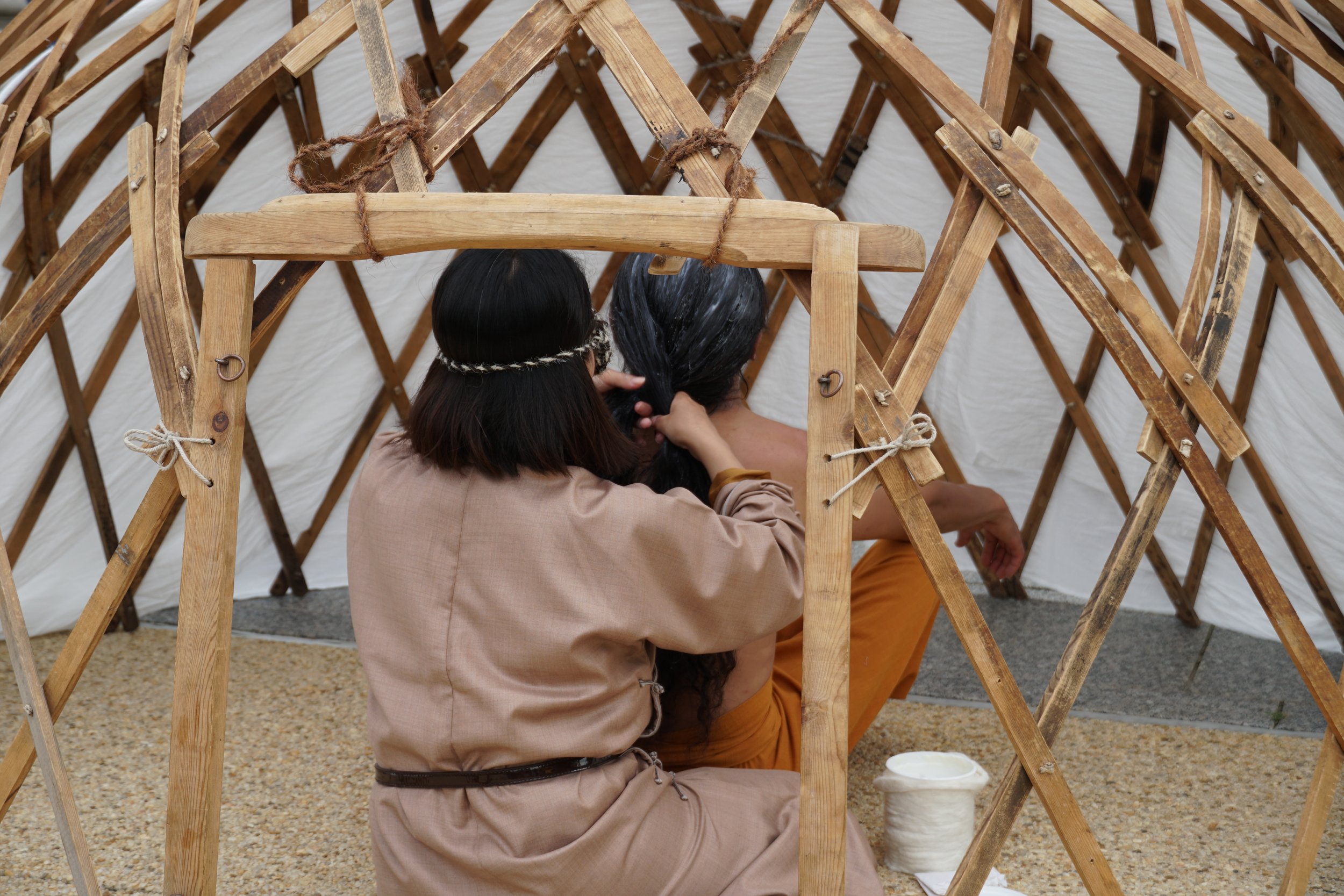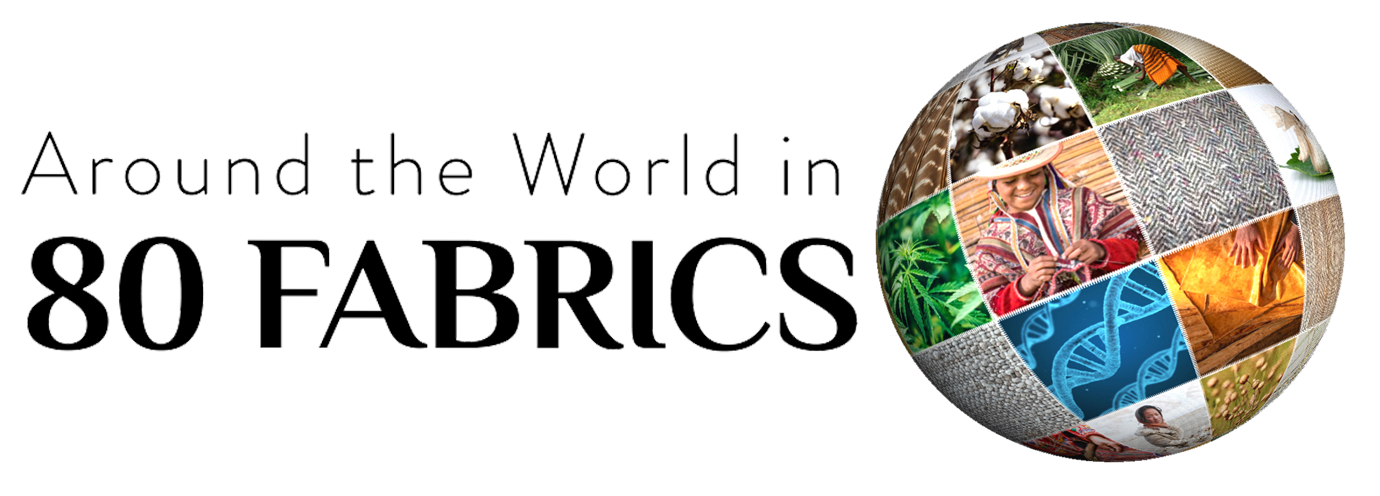FABRIC: HORSE HAIR
Regions: Mongolia
Fabric Name:
Horse Hair
Origin:
Equus ferus caballus, Mongolia
Who made our fabric:
Created by talented Mongolian husband and wife artists, Togmidshiirev Enkhbold and Munguntsetseg Lkhagvasuren.
Natural history and ecology:
The horse is central to Mongolian nomadic life: a family’s wealth is measured in horses, as they are used for work, meat, and milk, its long horsehair for braiding ropes, and the horsehair can also be used for violin bows, or for the strings of the Mongolian horsehair fiddle, one of their favorite instruments. The native breed, known as the Mongol Horse has been the same since the time of Genghis Khan.
What makes this so special:
In Mongolian shamanic culture, the soul of a human is called a wind horse. The wind horse is seen on the Mongolian coat of arms, sung about in traditional songs, and recited in epic poems. Central to Mongolian nomadic life for centuries, Mongolia boasts some of the world’s best horsemen: able to slip down sideways on their galloping horses while firing off an arrow with deadly accuracy.
“A man without a horse is like a bird without wings.”

"We believe we can preserve this cultural tradition for many more years," says Togmidshiirev

“We are trying to send this message to remind people of the life that is close to nature. We feel more connected with our surroundings in the vastness of Mongolia. We feel like we are kind of sending this message to others but not in a preaching way, just reminding people. Gently.”
— Togmidshiirev Enkhbold and Munguntsetseg Lkhagvasuren/Horse Hair
Quilt of 5 Jewels, Mongolia
Togmidshiirev Enkhbold and Munguntsetseg Lkhagvasuren
Created by talented Mongolian Artists husband and wife, Togmidshiirev Enkhbold and Munguntsetseg Lkhagvasuren, this gorgeous textile art piece is a celebration of Mongolia’s non-petroleum textile alternatives. Togmidshiirev Enkhbold is a prominent urban-based artist whose work addresses contemporary Mongolian issues like mining and pollution. His large-scale canvases are created using dung, felt, shrubs, ash, rust, animal skin, and tripe. His wife, artist Munguntstetseg Lkhagwasuren, works in many forms of media including horse hair fiber sculpture. These two artists journeyed across the expansive Mongolian landscape, from the yak herds of the Khangai mountains to the Bactrian camels of the vast Gobi Desert. Along the way, they gathered materials from what is known as Mongolia’s 5 Fiber Jewels -- the sheep, yak, camel, goat, and horses—and created this one-of-a-kind precious biodegradable felt quilt. During their journey, the artists gained deep insight into the ecological relationship between the herders, their animals, and felt-making. Recognized as a UNESCO Intangible Cultural Heritage, this 3000-year-old tradition remains a living art. Enkbold and Munguntsetseg met with nomadic herdsmen and shared discussions about petroleum fiber pollution, the health of the land, and the ecological symbioses that keep them alive in such extreme temperatures ranging from -45F to 112F. The reverence for these animals and the age-old textile tradition of feltmaking is beautifully shared in this Mongolian poem.
“May the felt be stronger than bone
And whiter than fresh snow
May the shears be sharp
May the fleece be fluffy or
May the shears be sharp
May the sheared sheep
Be tens or hundreds of thousands
May the dust from these sheep
Rise up to the sky”




